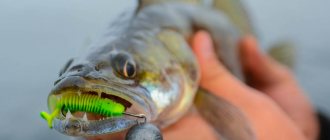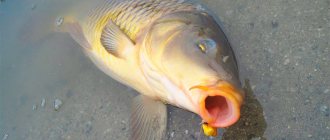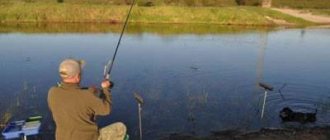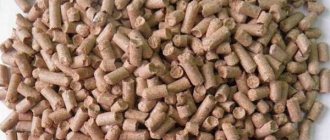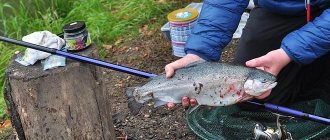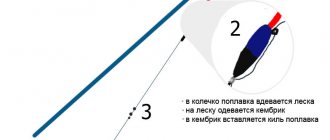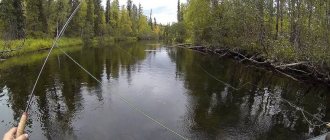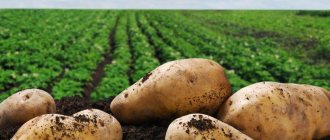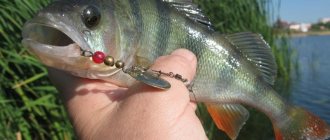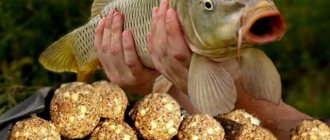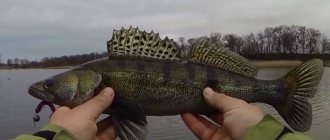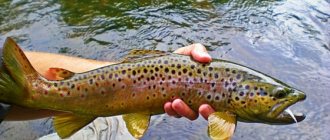Advanced fishermen specializing in carp fishing regularly monitor new products appearing on the fishing tackle and bait market and experiment with their use. Bait pellets made, without exaggeration, a revolutionary revolution and took a priority place among those known today. The use of bait and pellets has led to the emergence of new fishing methods in so-called complex water bodies. We will look at the features of fishing with pellets and the secrets of their production in this article.
What are pellets for fishing?
Content
The literal translation from English of the word pellet sounds like “ball” or “pellet”, however, many anglers simply call it granular food.
Pellets are produced in several ways:
- Extrusion or processing of components under high pressure at high temperature.
- Cold pressed technology that produces solid granules.
Fishing pellets are granules of various shapes, but most are cylindrical. Their main property is to dissolve in water after some time. The contents of the granules also differ, and by making them yourself, it is possible to add additional necessary components. Instant, hemp, corn, and flavored pellets are just a small list of available types of pellets intended for carp fishing enthusiasts. In addition to existing ones, new products appear every year, attracting fishermen with new content, shape and manufacturing methods.
Specialized fishing tackle stores offer a wide range of pellets, but every fishing enthusiast has the opportunity to experiment and prepare this bait or bait with his own hands.
Today, perhaps, there is no fisherman left who has not heard of such a bait as pellets
Types of pellets for fishing
In addition to the manufacturing method, there are several more classifications, in particular according to composition, time of dissolution in water, size, and so on. All pellets sold on the fishing market can be divided into two main categories:
Instantly soluble, compressed at high temperatures.- Long-lasting, produced using wet pressing.
Types of pellets for fishing
There are different classifications of pellets, depending on the components contained inside, as well as on the method of their manufacture. As a result of dry pressing, instant pellets are obtained, and wet pressing is used in the production of long-lasting, also called fatty, granules.
Types of pellets baits:
- Instant pellets consist primarily of crushed cereals flavored with protein additives. Due to their low moisture content, such granules quickly absorb water, and their complementary substances dissolve in water in a short period of time.
- Long-lasting (fat or fish) granules are rich in fats and proteins, but their main component is fish meal or extruded grains. To form fat pellets, additional components are used as binding components. The main task of such bait is to keep the fish in the right place for as long as possible, so they dissolve in water much longer than the granules of the first type.
Read more
How to prepare pea bait for fishing?
In addition to these types, there is differentiation into floating and sinking pellets. Its diameter can vary from 1 mm to 28 mm; accordingly, a gradation from very small, small to large and very large pellet sizes is considered.
Separately, we note the presence in the assortment of soft bait pellets, which contain nutrients of natural origin, as well as amino acids that strongly attract fish.
Its use allows you to achieve positive results in any conditions.
General information
Pellets is translated from English as “ball”, but most fishermen often call it pellet food.
Fish pellets are produced using two methods:
- Using cold pressing , which allows you to obtain solid granules at the final stage.
- Extrusion of main components at elevated temperatures and under high pressure.
A fishing ring can have various shapes, but most often it is made in the form of a cylinder. The main feature of pellets is that they dissolve in water after a certain period of time. The composition of the granules is also different, while making the bait yourself, you can add any necessary ingredients.
Long-lasting, corn, hemp, trout pellets - this is just a short list of possible manufacturing options. In addition to existing baits, different types are developed every year, which attract fishermen with a new composition, appearance and production method.
Most fishing stores offer a huge selection of pellets, but any angler can experiment and make their own pellets
Methods of use
Using pellets as bait
Pellets granules have several advantages compared to classic baits:
- sink quickly;
- do not form “dust”, small particles are in the water horizon, thereby not attracting small fish;
- a wide range makes it possible to choose exactly the feeding that suits a certain type of fish;
Pellets as bait can be inexpensive, even if purchased at a specialty store. At the beginning of fishing, an instant type of bait is used, the purpose of which is to quickly attract fish to the fishing spot, and after the first bites, throw in a few fatty granules.
To cast bait into the desired place, use the following methods:
- ladle;
- rocket;
- slingshot;
- hands.
Using pellets as a nozzle
Fishing results can be significantly improved if you use granules not only as bait, but also as bait. Anglers place pellets on the hook both lengthwise and crosswise. If the fish bite is quite active, it greedily grabs the bait, then it is better to attach it across, choosing granules that are small in diameter. It is easier to use round pellets with ready-made holes in it, although with the help of a special tool the angler can make such a hole himself. Considering the fact that an additional hole allows water to get inside and dissolve the pellet faster, you can pre-dip such pellets into an oil solution before use in order to increase the time they remain on the hook.
The peculiarity of pellets is that it gives maximum results, since it is easy to introduce the necessary components into it and serve this product to the fish
What pellets to use for carp fishing
For carp fishing in the summer, pellets with a high fat content are suitable, usually trout and halibut pellets. It is most effective for fishing in the warm season. This is due to the high content of fat and oils in its composition, which are attractive to fish, are a valuable resource, and in warm water they reveal their aroma most effectively.
It is not effective when fishing in cold water, since the oil in it hardens and there is no aroma from them.
During the cold seasons, spring, fall and winter, the most effective pellets are those with low oil content, such as hemp, or with corn syrup (CSL).
The pellets can be soaked in a variety of flavorings, or can be doused with boiling water and mixed with powdered additives such as cornmeal, fishmeal, or dried garlic powder.
We recommend: Why you need to add salt to your bait when fishing
When making bait, you can mix different flavors and sizes, often this gives a positive effect and result.
You can select the required pellets, for example, in.
Making pellets yourself
Many fishing enthusiasts ask the question: “Is it possible to make pellets at home, and will its properties differ significantly from factory-made pellets?” It is important to remember that the process of preparing homemade pellets is practically a science, allowing the prepared pellets to become truly magical, and the fishing results to constantly delight the fisherman.
Read more
How to make bait from hemp seeds for fishing?
The first stage is preparing a special “dough”.
When choosing components, adding or excluding individual ingredients, you must not violate the recommended percentages between the main components:
- Feed base – 40%.
- Hemp (sunflower) seeds, roasted and ground – 20%.
- Crushed cookies –20%.
- Powdered milk (milk protein) –10%.
- Powdered loam –10%.
To increase shelf life, add approximately 50 grams of salt, as well as a small amount of flavoring if desired. The resulting mixture of dry ingredients is steamed with a small amount of hot water (at the rate of 50 ml per 400 grams of mixture), and after 5-7 minutes the dough is kneaded, wetting your hands in olive oil and, if necessary, adding warm water a teaspoon at a time, kneading well after each additions.
Next, the process of forming granules of the desired shape will occur. There are several cooking methods:
- labor-intensive - rolling the dough into sausages of the required diameter, which should be cut after drying for a short time;
- rolling out on boards specially designed for this purpose (boilie boards).
- the use of modified meat grinders without knives and holes in the mesh of the required size;
- The author's method is to use a pastry syringe with a nozzle or a used, pre-well-rinsed, tube of silicone with a construction gun.
It’s no secret that pellets can be made with your own hands.
And the last stage is final drying, possibly even using an oven. The drying time is determined by the presence of binding components in the pellets, such as, for example, gelatin. Further, in order to increase the time spent on the hook, the granules are impregnated with oil or fish oil.
Recipes
In the matter of preparing pellet bait, as we know, as many fishermen as there are recipes, obtained, most often, experimentally.
One of the recipes, the components of which must be observed in weight ratio:
- Breadcrumbs – 35%.
- Crushed oatmeal cookies –10%.
- Oatmeal – 10%.
- Oatmeal – 10%.
- Ground flour – 10%.
- Powdered milk – 5%.
- Corn flakes – 10%.
- Bran – 10%.
Preparation of dough from dry ingredients - steaming, kneading and shaping - takes place according to the previously described algorithm.
Another recipe for pellets implies that the process of forming granules will take place on a boilie board.
In this version, the dough should be more plastic than in the previous version:
Read more
Wobblers "Zip Bates"
- Ready-made bait for fish – 600 grams.
- Soy flour (can be replaced with semolina) – 200 grams.
- Ground roasted hemp – 50 grams.
- Dry ground clay – 150 grams.
The addition of clay not only makes the mixture more flexible, but also makes it heavier, which facilitates long-distance casting of such a bait. The dissolution period of such granules increases to 1-2 hours.
Tips for using pellets in fishing
Using pellets as bait, an angler can expect to catch carp, trout, catfish and large bream.
These recommendations for using pellet baits will be useful for both beginners and experienced fishermen:
- pellets can be used as bait in both match and bottom fishing;
- the use of granules for fishing in reservoirs with a muddy bottom does not allow baits to become saturated with muddy odors and thus scare away fish;
- you need to choose pellets in accordance with the water temperature for which they are intended;
- Despite the fact that the sizes of pellets are different, experienced fishermen practice mixing pellets of different sizes. Most often they make a mix of sizes 6 mm, 8 mm and 10 mm.
Originally posted 2018-07-20 16:40:09.
How to select
Depending on the type of application and use cases, pellets should be selected based on diameter and composition.
Pelets granules come in the following diameters:
- 1 mm. The smallest diameter that can be purchased today, this diameter is suitable for winter fishing for bait.
- 2 mm. Popular size, suitable for use with Method type feeders when fishing in cold water. Before use, you need to scald it with boiling water, after which it sticks perfectly to the feeder.
- 4 mm. Large granules, used primarily as hook bait. Can be used instead of a large fraction.
- 6 mm. Used as bait on a hook using silicone rings, less often on a hair rig. Used when fishing for carp, bream or silver carp. Can be used as part of bait mixture. Suitable for catching large fish.
- 8 mm. Used on hair equipment. It is rarely used as part of bait.
We recommend: Fishing with cheese, how to use it, who bites on it
A universal option suitable for most situations is 4 mm.
Popular by composition:
- Halibut - High oil pellets (usually fish oil) filled with nutrients and protein. Large carp, barbel, catfish, bream and chub love them.
- Carp - made from vegetable proteins, less fatty than halibut, works when fishing for carp in cold water. They dissolve quickly in water, which may be a disadvantage in some situations.
- Trout - Made from salmon fry meal or other fishmeal, they are high in fat and protein. Because of this, they work best in the summer, when warm water washes the oil out of the bait and creates a long trail of scent.
- Hemp - not suitable for use on a hook, as it dissolves very quickly into mush. Convenient to use in PVC bags and feeders. They contain little oil, so they can be used all year round. Suitable for catching bream, carp or tench.
- Soft feed pellets - sold canned. Suitable for feeding carp or silver carp.
- Corn Syrup Liquor, or CSL - CSL stands for Corn Steep Liquor. Granules with a piquant odor, quickly dissolve in water, creating a thin trail of attractive food particles. Can be used in PVA bags or Method type feeders, or as loose food. Sweet, carp, barbel and bream love it.
In addition to these granules, there are many others made from biscuit crumbs, grain cake, etc., they also work well, experiment.
